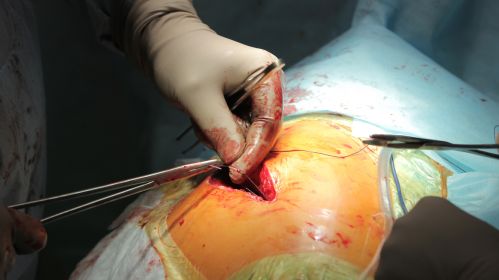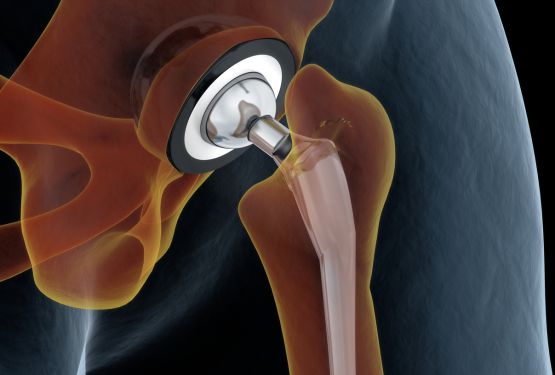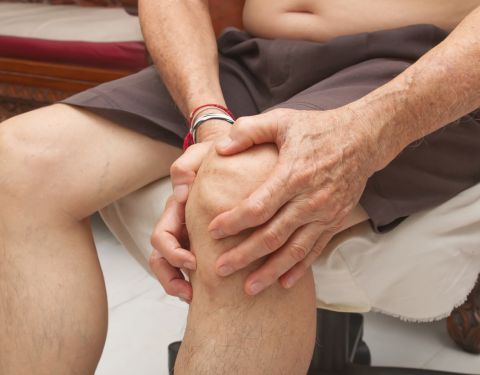If we cannot fully inform you of all complications, including those that are exceptional, it is still possible to tell you which ones are the most serious. It is also possible to give you an indication of the rates of complications, with the following reservations:
This rate varies in part with the surgeon’s experience. Indeed, it is difficult to give you percentages of complications because they depend essentially on the own reactivity of the patients (age, weight, tobacco, alcohol …) and also their own health: everyone knows, for example, that diabetes increases surgical risks. Mentality, willingness to heal, motivation and respect for prescribed treatments are important factors that are necessary and even essential for recovery.
These rates have only a relative value. If one complication has one chance in 100, this means that for 99% of the patients, the complication rate will be 0, but for the 100th patient, it will be 100%.

Complications related to anesthesia:
Our anesthetists will explain them to you during the consultation. You can also ask questions to the anesthesiologist (you’ll see him the day before or in the morning of your surgery) as well as to your doctor.
Complications related to the surgery:
The complications of the surgery are explained in the documents that we give you and which we ask you to read after the consultation. If you would like to know more information that is more specific or specific in your case, we recommend you make an appointment during the second consultation before the date of the surgery to discuss it together again.
In general, complications, even exceptional, are the counterpart of the effectiveness of the treatments that are proposed to you. Surgery has its limitations and some things are still impossible to change, even with the most elaborate techniques.

Most complications are common to all hip surgeries
– Superficial infection,
– Superficial neuroma and areas of anesthesia next to the scar,
– Sensitive or hypertrophic scar,
– Phlebitis and pulmonary embolism: these complications will be best prevented by anticoagulant treatment; you should know that the adaptation of this one would require very precise rules and regular biological controls.
– A hematoma or infection may justify a revision surgery early in order to achieve evacuation and cleaning.
– Bedsores: they will be prevented by regular nursing and a resumption of the power walk.
– Vascular injury or nerve compression may impose a complementary re-surgery,
– Breaking of the material.
– Dystrophy or stiffness: this decalcification syndrome will be prevented at best by an adapted and early physiotherapy.
Other complications are more specific in case of prosthetics
– Dislocations:
In order to avoid this, we advise you to follow carefully the advice given by the surgeon and the nurses in order to eliminate this risk, which would justify new anesthesia and sometimes even a new surgery.
– Infection: Rate
In most cases, its occurrence justifies reoperation. In some cases, the prosthesis will have to be removed for a perfect cleaning. Then another prosthesis will be put in place, either at the same operative time or during a subsequent operating period.
– Loosening:
This phenomenon usually occurs after several years. It results in pain in the hip, thigh or knee. An infection must be eliminated. The only effective therapy is a surgical recovery with a change of the prosthesis.
– Fracture of prosthesis:
They are currently exceptional.
– Wear of components:
In particular, polyethylene inserted at the level of the acetabulum (pelvis), later can be responsible for the loosening of the femoral prosthesis.
This may justify a surgical change of the worn implant.
The lifetime of a prosthesis is currently evaluated around 15 years, sometimes longer, which means that at the end of this period you are likely to have a new surgery in order to change the worn prosthetic implant.

Information and advice for the patient with a total hip prosthesis:
You will benefit from the installation of a total hip prosthesis; the procedure will be performed either under spinal anesthesia or under general anesthesia depending on the choice made with you and your anesthetist.
It will take place in a specific operating room with laminar flow and hypertension that reduces the risk of infection (particles in the air).
2-3 days after the surgery, rest in bed will be necessary. Then, very quickly, there will be the resumption of the walk under the control of the physiotherapist.
Re-education sessions are rarely required after discharge from the clinic, except in a few special cases.
The discharge from the clinic will be authorized between the 6th and the 8th day depending on the case. Often there is a need for anticoagulant treatment at home for a few weeks in order to decrease the risk of phlebitis.
The main problems to be prevented with a hip prosthesis are the risk of infection and dislocation. These risks diminish over time, nevertheless, you must remain cautious and do not forget them.
To prevent infection:
A urine test and a preoperative dental examination will be useful to detect an infectious outbreak that has not been known before; in case of abnormality, antibiotic treatment may be necessary before the surgery. Anyway, you will have to remain careful afterward; as soon as you present an infectious episode (whether urogynecological, dental, ENT, hands, feet, etc.), you should consult your doctor for appropriate antibiotic treatment.
Moreover, any injection into the buttock of the operated side is prohibited.
To avoid dislocation:
Certain gestures must be avoided: the hip must not be bent while the knee is retracted, so do not cross the legs in a sitting position and always keep your knees well away towards the outside.
Some movements of everyday life have to be reconsidered:
1) In a sitting position:
Do not sit or get up from a too low seat and do not sit or get up from a bed, which is too low. Thus, it is forbidden to sit on small benches or too low chairs and, of course, in lounge chairs. A chair or an armchair whose seat is high enough and rigid is ideal. It is also necessary to raise the toilet seat.
2) For the toilet:
It is necessary to prefer stand-up showers. Be careful with the toilet of the feet and toenails because it is forbidden to flex the hip.
3) Dressing:
Always start with the operated side; put on underwear, pants, socks, stockings or tights. You have to lean forward very gently. For shoes, use a long shoehorn.
4) Beware of polished floors, stairs, and wet floors.
5) Do not sit in a car for a month because the seats are usually low and later do it with great care.
6) For younger children, certain sports activities have to be avoided. It will be discussed with the surgeon.
All these tips remain valid even later after the surgery and you should not forget them. They will further facilitate the postoperative course and the lifetime of your prosthesis.
During the first three months, some movements may dislocate your prosthesis because the tissues are not completely healed. It is, therefore, necessary to take some precautions: in bed, sitting, lying down. Your physiotherapist will explain them to you.
Later, do not forget that:
– You should take care of your prosthesis to increase its longevity.
– Your prosthesis must be monitored regularly by your surgeon; it must also be checked if your hip becomes painful.
– Precautions are essential in case of other diseases (infection, operation).
Before the surgery, do not forget to visit the anesthesis and cardiologist and stop using anticoagulating or similar medicines (aspirin, Ticlid, etc …).








